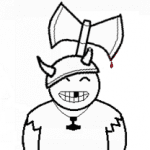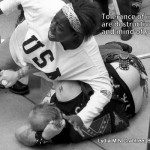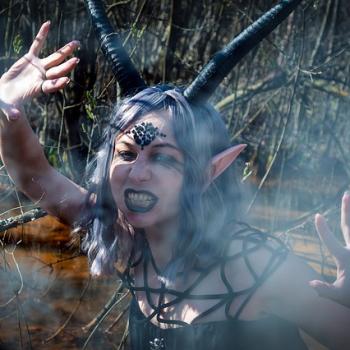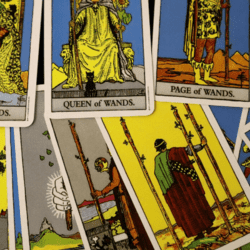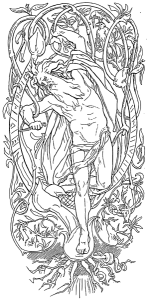 When we consider the stories of the Norse gods that are found in the Eddas, one common theme is that of self-sacrifice. The most obvious and talked about sacrifice is Odin’s eye, which he traded to Mimir for a drink from the deep well of wisdom. Some scholars have debated as to whether the eye that Odin left was perhaps his third eye, so that he could see into extended depths throughout the realms and further his pursuit of wisdom in various matters. Others, however, say the eye he left was a physical representation of how far the Allfather was willing to go to obtain the truth and wisdom that was held in each of the nine worlds. I am of the belief that it was a physical sacrifice, but regardless, it is just one instance of Odin’s willingness to give up a part of himself in consideration of the bigger picture and the part he plays in it. It is his role in being the chieftain, shaman, guide, and wise counselor to seek and know the intricate details and spiritual energies of living beings.
When we consider the stories of the Norse gods that are found in the Eddas, one common theme is that of self-sacrifice. The most obvious and talked about sacrifice is Odin’s eye, which he traded to Mimir for a drink from the deep well of wisdom. Some scholars have debated as to whether the eye that Odin left was perhaps his third eye, so that he could see into extended depths throughout the realms and further his pursuit of wisdom in various matters. Others, however, say the eye he left was a physical representation of how far the Allfather was willing to go to obtain the truth and wisdom that was held in each of the nine worlds. I am of the belief that it was a physical sacrifice, but regardless, it is just one instance of Odin’s willingness to give up a part of himself in consideration of the bigger picture and the part he plays in it. It is his role in being the chieftain, shaman, guide, and wise counselor to seek and know the intricate details and spiritual energies of living beings.
Odin proves his commitment to the pursuit of wisdom once again in his quest for the runes. He hung for nine days and nights upon the tree Yggdrasil after being pierced by his own spear. Without food, water, or aid, he remained in a determined effort to reach for, and bring back, the runes. In Midgard, he instructs us to learn and study until we ourselves understand what they represent and the energies that they possess.
The Havamal (also known as the Words of Odin, or Words of the High One) reads:
“Hidden Runes shalt thou seek and interpreted signs,
many symbols of might and power,
by the great Singer painted, by the high Powers fashioned,
graved by the Utterer of gods.
For gods graved Odin, for elves graved Daïn,
Dvalin the Dallier for dwarfs,
All-wise for Jötuns, and I, of myself,
graved some for the sons of men.
Dost know how to write, dost know how to read,
dost know how to paint, dost know how to prove,
dost know how to ask, dost know how to offer,
dost know how to send, dost know how to spend?”
Gaining that wisdom was so important that a sacrifice of self was needed. It was clearly vital to Odin to bring the runes forth, because of their importance to humanity. Philosophers have also debated as to whether his sacrifice symbolizes the sacrifice of the inner ego that we carry with us from childhood.
There are other examples of self-sacrifice by other gods in the lore. Heimdall, for example, forfeits his ear as an exchange for his ability to possess sight of all things. In doing this, he is bestowed with the responsibility of keeping constant watch and will blow the mighty Gjallarhorn to announce the beginning of Ragnarök. This is to be considered a sacrificial gift to both gods and man; the blowing of the horn signals that the current world is drawing to a close (marked by the fierce battle of the gods), and it also signifies the arrival of another world that is about to begin. Since Heimdall is also the originator of the social classes of humans, his vested interest in Midgard is fitting.
In these accounts, we see just how far the gods are willing to go for the betterment of mankind and for their selves. In the modern day, we may often become distracted by everyday responsibilities and commitments – and elements that detract from our spiritual path. When we perform a blot, we are taking time away from the everyday mundane to actively sacrifice our time and energy, and to recognize the gods and the sacrifices that they have also made. Incorporating rituals into our lives that honor the gods is not to simply “go through the motions,” but rather to mindfully participate in something that takes us out of our monotony and the sometimes spiritually lacking world that we live in.
The most important sacrifice that we can make is one of our most valued possessions – time. Time spent meditating with the gods, time spent in nature appreciating the changing seasons, time devoted to studying the runes, and time in dedicated allotments to which we make offerings to the gods and goddesses are all ways that we can incorporate traditions that are both sacred to the Northern traditions and to ourselves.
Another consideration are the sacrifices we’ve made in our lives. There are moments in each of our lives when sacrifice isn’t worth the emotional or physical toll it takes on us, despite the best of intentions. Sacrifice of self is sometimes critical, because we must let go of that which no longer serves our best interest. If we become so bogged down by our own self-sabotaging efforts, then we end up tying a knot between our own ankles and are unable to proceed further. The gods aim to see us walk our paths, so it is crucial to consider what is being sacrificed in the process of the journey. Are we giving up entire parts of ourselves to please others? Are we willing to make a sacrifice of our own egos and wants in trade for something better and healthier? Are there people in our lives whose only aim is to see us fail? If so, then an evaluation of what needs to be sacrificed, and what needs to be kept intact, is needed. Sometimes, the only way to move ahead is by letting go.
Heathen Woman is published on alternate Fridays. Subscribe via RSS or e-mail!


